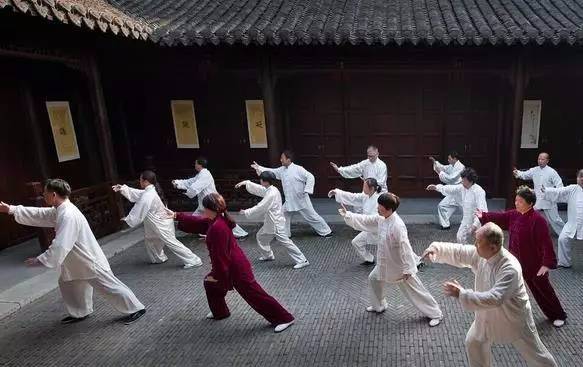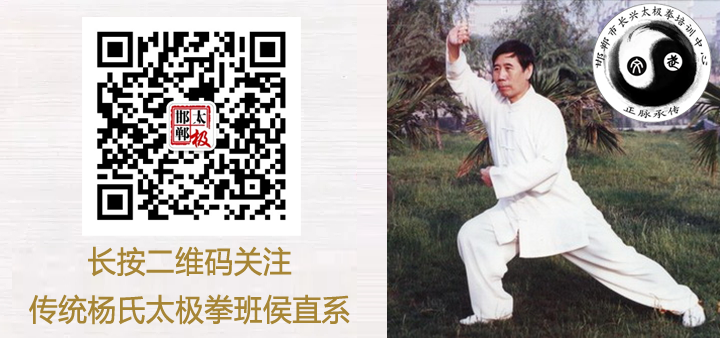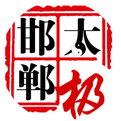
1. A true Tai Chi practitioner focuses on internal power. In Wu Tunan’s memoirs, he wrote that practicing Tai Chi requires the ability to release internal energy and control opponents with it. This indicates that Tai Chi practitioners emphasize internal strength.
However, Wu Tunan also mentioned that while his style of Tai Chi was quite powerful, it was not yet at the top level compared to some other martial arts styles. This sentiment was later omitted by Tai Chi disciples, which seems rather petty.
Wang Yongquan also stated that one must use internal power to control opponents, further emphasizing the importance of internal skill in Tai Chi.
Yet, in practice, very few can achieve this. Most are merely fantasizing.
2. Practitioners of combat Tai Chi do not neglect external martial arts training.Many people consider swinging a long pole as a unique skill, with some even attaching sandbags to practice. Others use large barrels filled with sand, turning them daily to build overall strength. A master of Chen-style Tai Chi particularly enjoyed weightlifting. Many have witnessed his impressive martial skills but are unaware that his prowess comes from external training, mistakenly believing it to be a secret internal technique.
Some practice Iron Sand Palm or Eagle Claw techniques. For instance, Chen-style Tai Chi incorporates grappling techniques, which require solid hand skills.
Many Tai Chi masters acknowledge that combat relies on strength as a foundation, with technique being secondary. A good routine is ineffective without sufficient power to back it up.
I recall reading a book where a Tai Chi master stated that strength should account for 70% of combat effectiveness, while routines and techniques only account for 30%.
Some practitioners focus solely on routines, which can be detrimental in combat. In reality, a routine practitioner facing an experienced street fighter would likely struggle. Many Tai Chi enthusiasts are blissfully unaware of their limitations.
3. The primary goal of practicing Tai Chi is to cultivate a lively spirit.If one becomes rigid and only follows textbooks and dogmas, they will suffer the consequences.
4. The theory of Tai Chi is also related to Xing Yi Quan.Thus, traditional martial arts manuals can mutually validate each other.
5. In real combat, whether in a ring or on a battlefield, it is not about executing specific Tai Chi techniques; it is about spontaneous expression driven by passion, sometimes leading to wild punches. This is entirely normal.
If you try to use Tai Chi postures like Cloud Hands in a fight, you will quickly find yourself on the ground.
6. Why is boxing effective?Because boxing techniques are simple and practical, consisting of a few movements that can be varied in countless ways.
Boxing has no feints or flashy moves; when two strong opponents meet, they simply use their hands to engage.
More importantly, while boxing techniques are simple, they become exceptional through thousands of repetitions. Any excellent boxer relies on just a few techniques, yet we see a multitude of styles in their matches.
Take Mike Tyson, for example; his waist strength is such that few can withstand his punches. Yet, even Tyson was eventually defeated. Is boxing simple?
If you find that you cannot apply Tai Chi in combat, try practicing boxing and sparring with others.
Then, practice wrestling and striking techniques, and apply them in practice.
After a few months, when you return to Tai Chi competitions, you may find yourself becoming a champion.
Do not confine yourself at home, entertaining yourself with routines and manuals.
Many theories of internal martial arts are akin to the imaginative tales found in Jin Yong’s novels.
7. Good theory and effective internal techniques mean that after ten minutes of practice today, you wake up tomorrow feeling energetic and eager to try, with your skills noticeably improved.
If you do not experience this effect, it is worth questioning.
In short, one must focus on developing hand skills.
Once you have solid hand skills, you will have everything.
There is no need to practice anything else—no specific martial arts, techniques, internal skills, or secret techniques from any school, including Shaolin or Wudang.
Once you have developed your hand skills, under the right conditions, you can handle any style. This may seem fanciful, but it is a feeling you will understand daily. In other words, after each practice session, you will know that your state is quite ‘fierce.’ Therefore, you must have confidence.
Over time, as you reach the right level, you will become a ‘master.’
8. A master’s skills must be evident in their hands.If skills cannot be directly demonstrated through hand techniques, how can one be considered a master?
In a person, aside from the mind, the hands are the most agile.
Martial arts express your thoughts through your hands. Those with strong expressive abilities are ‘masters,’ while those with weak abilities are novices. Those with no expressive ability are mere amateurs.
It is said that among the 72 Shaolin secret techniques, the foremost are One-Finger Zen and Vermilion Palm. In Taoist secret techniques, the top is Five Thunder Palm. All these relate to hand skills.
Years ago, when I met some seniors, they would take my hands to examine and feel them, then offer comments: how my body was, what I needed to improve.
Fortune tellers often assess hands in a similar manner.
Hand skills are profound.

If there are any copyright issues, please contact the original author through the backend. The articles published are for learning and reference only. Please practice under the guidance of a professional teacher.

Official website: http://www.yunshuiwang.com



